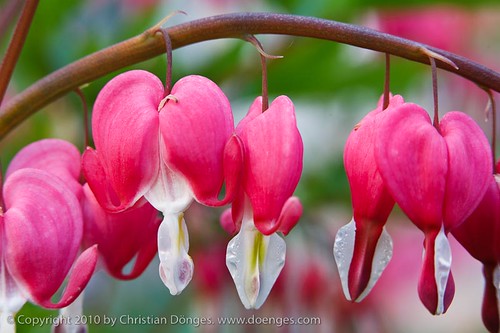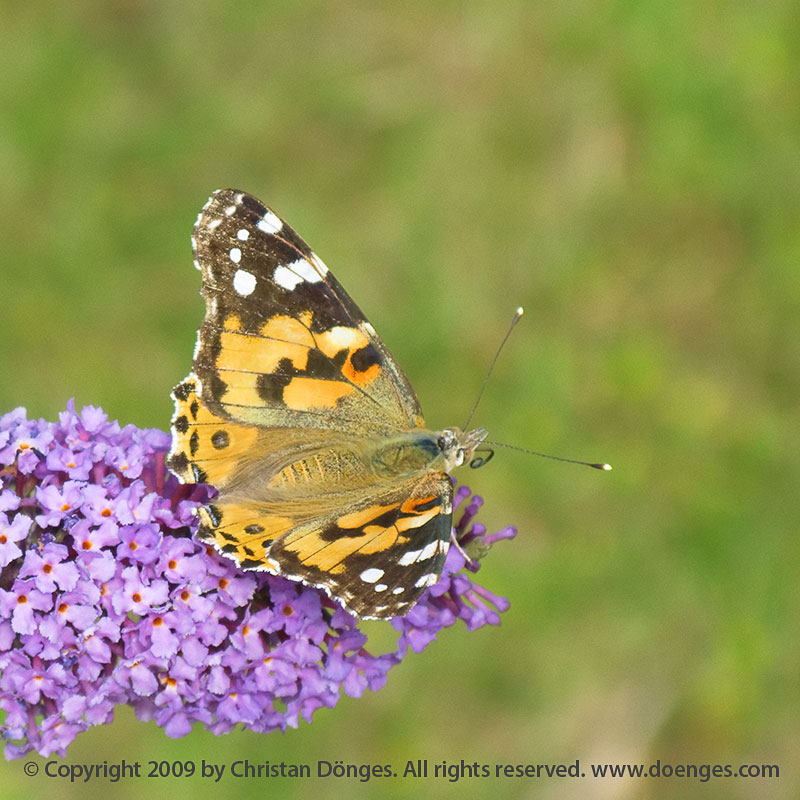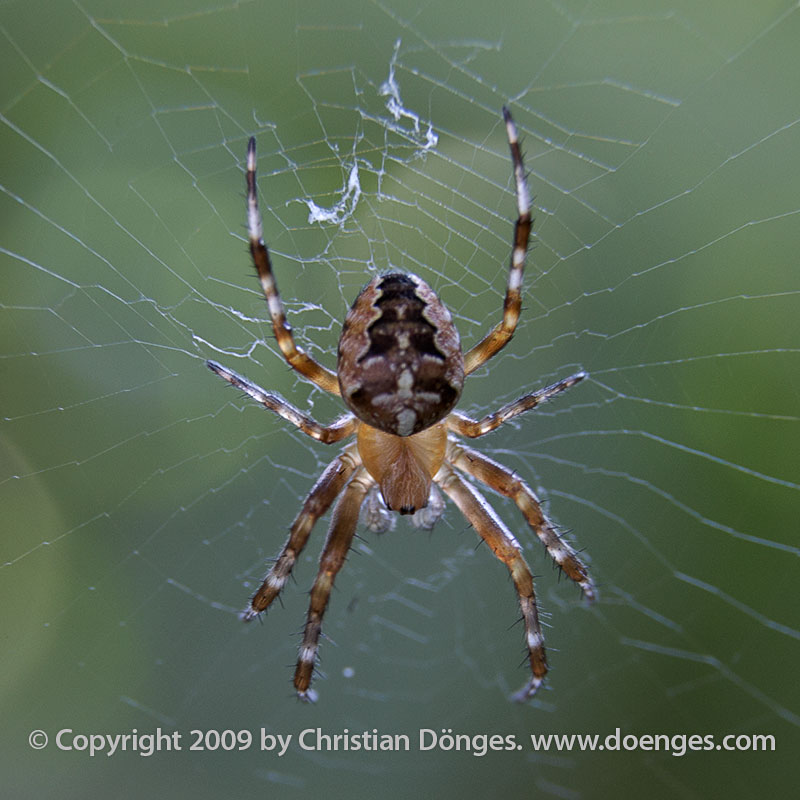The windflowers in the last post are wilting away, unfortunately before I had a chance to re-visit them. Instead, the bleeding heart flowers are in full bloom – such is the cycle of life.
The bleeding heart, also known as Venus’s car, Dutchman’s trousers, lyre flower or by their latin name lamprocapnos spectabilis is originally from Korea and north and western China, but it seems to do very well in almost any temperate climate, so it is a very popular garden plant.
We simply let it grow and cut the wilted stalks short in the fall and they come back year after year.
In order to take the photo, I mounted the camera on a tripod and used an insane amount of extension (over 50 mm for a 70-200 mm lens). Despite an aperture of f/16, the depth of field is extremely shallow, about 2-3 mm in my estimate. That, combined with the light wind that moves the flowers like swings on a playground, made it challenging to get sharp images.
What really amazes me is how the lower white parts of the blossoms are textured. I had never noticed this with the real flowers before taking these pictures. Which just goes to show how photography can expand your awareness of the world. 🙂







